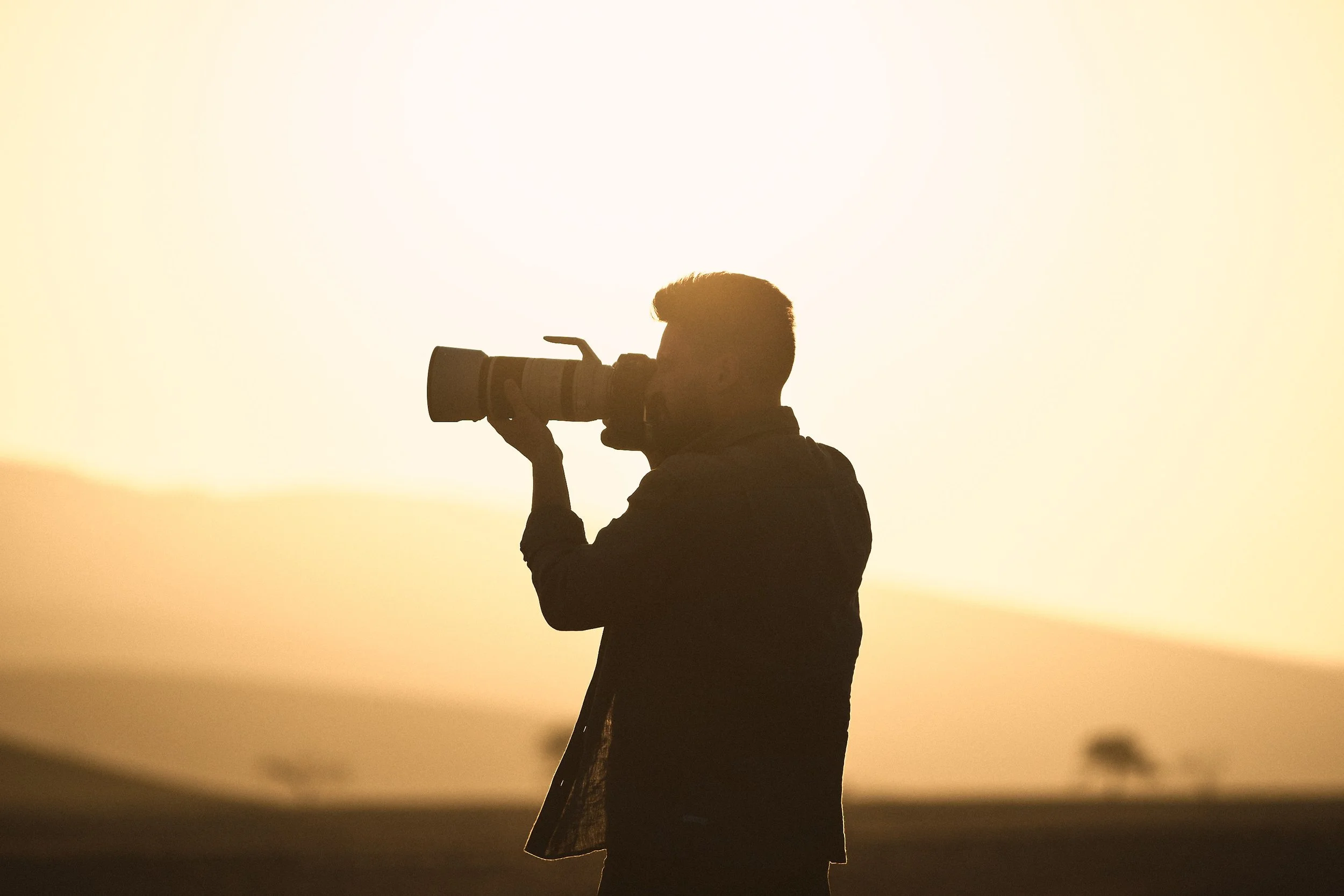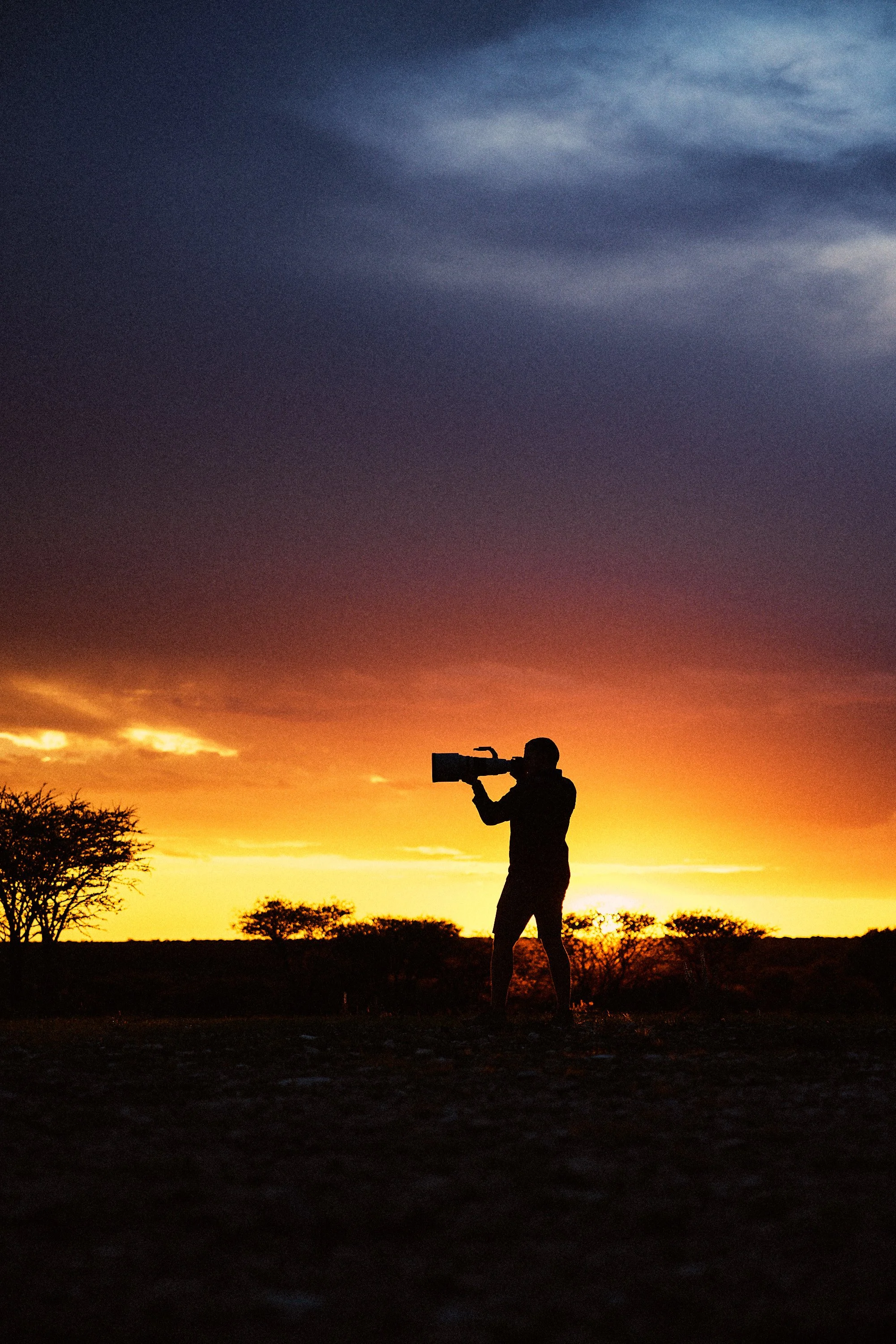Top 7 Lenses for Safari Photography in 2025 (Tried, Tested, and Actually Useful Advice)
I still remember the first time I landed in Africa with a camera. Heart pounding, hands slightly shaking, and a bag full of gear I thought I needed. By the end of that trip, half of it never left the vehicle, and I spent most of my time juggling lenses like a street performer who’d packed for a wedding shoot, not a safari.
If you’re planning your first or your tenth safari in 2025 and wondering what lenses to bring, I’ve been there. I’ve tested everything from massive primes to versatile zooms in places like the Central Kalahari, Etosha, Khwai, and South Luangwa. I’ve cursed myself for missing shots because I had the wrong lens on. I’ve also high-fived myself when I nailed the moment because I had the proper glass mounted and ready.
This post isn’t theoretical. These are real-world, dust-covered, lion-staredown-approved recommendations based on thousands of frames, field blunders, and the deep satisfaction of knowing your gear is helping, not hindering you.
So here they are: my top 7 safari lenses for 2025, in no particular order, because each serves a different purpose.
1. Canon RF 100–500mm f/4.5–7.1L IS USM
Let me put it bluntly: if you’re a Canon shooter and want one lens that does almost everything well on safari, this is it.
I brought this lens on multiple self-drive trips in Namibia and Botswana. It never failed me. Light enough to handhold from a vehicle window, sharp throughout the zoom range, and versatile enough to cover everything from distant leopards to close-up elephant portraits.
The 7.1 aperture at 500mm might scare some people off, but with modern sensors like the R5 and R6 Mark II, shooting at ISO 1600 or even 3200 is no big deal, especially in good African light. Pair it with a camera that has great AF, and you’ll be golden.
What I love:
Zoom range is ideal for safari
Super sharp at 500mm
Weather-sealed and built like a tank
What’s tricky:
Not the best in low light (dawn/dusk)
Pricey compared to 3rd-party options
2. Sony FE 200–600mm f/5.6–6.3 G OSS
If you’re a Sony shooter, stop reading and put this on your list. Seriously.
I’ve had guests on workshops show up with this lens, thinking it was “just okay.” By the end of the trip? They wouldn’t part with it for anything. The internal zoom is a game-changer in dusty environments like the Kalahari. No pumping air and sand into your lens barrel every time you reframe.
It’s not the fastest lens in the world, but it’s so useful. From hyenas at a distance to giraffes drinking from a pan, this thing nails the versatility zone. Works incredibly well on Sony A7 IV, A9 II, or A1 bodies.
What I love:
Internal Zoom is excellent for Safari
Reach is fantastic
Affordable compared to primes
What’s tricky:
A bit slow in early light
Big for carry-on, but still doable
3. Canon RF 100–300mm f/2.8L IS USM
This lens caught me by surprise. I expected it to be niche. It’s not.
It’s actually become my go-to lens for dynamic scenes on safari where I want to isolate subjects with creamy backgrounds but still have zoom flexibility. Think elephants playing in the river, lions interacting in golden light, or birds mid-flight in dense bush.
The f/2.8 across the range means you can shoot early, late, or in the shade without stress. I pair this with a second body (usually my R3 or R5 with a 600mm or 400mm), and I’m covered for 90% of what Africa throws at me.
What I love:
Image quality is mind-blowing
Excellent for portraits and storytelling
Works great with extenders (1.4x)
What’s tricky:
Heavy
Expensive
You need a second longer lens
Canon RF 100–300mm in Slovenia
4. Nikon Z 180–600mm f/5.6–6.3 VR
Nikon shooters, you finally have your 200–600. And it’s so good.
I tested this lens briefly during a recent Zambia trip (thank you, generous guest who let me borrow it), and I was genuinely impressed. It’s sharp, well-balanced, and nails focus even on tricky subjects like birds in flight. The VR system (vibration reduction) is invaluable for handheld panning shots of moving animals.
It’s also surprisingly light for its range. Budget-conscious? Pair this with a Nikon Z6 II or Z8 and you’ve got a safari combo that will make you feel like you cheated the system.
What I love:
Incredible value for money
Huge reach
Internal zoom!
What’s tricky:
Max aperture is a bit slow
No weather sealing (be careful in dust)
5. Canon RF 600mm f/4L IS USM
Let’s talk about the big guns.
This is my “reach rig” on serious safari trips. Paired with the Canon R3, it’s unbeatable for nailing birds in flight, far-off predators, or compressed compositions that make your subject pop. The bokeh is just delicious.
But let me be honest here: this is not your only lens. If you only pack a 600mm lens, you will miss shots. Period. I learned that the hard way when I got too close to a pride of lions and couldn’t zoom out far enough to include the cubs playing nearby. Heartbreaking.
What I love:
Optical quality is next-level
Fast autofocus, even in bad light
Background separation is stunning
What’s tricky:
Inflexible
Expensive (obviously)
Needs a Zoom to back it up
Canon RF 600mm coming into play around the Chobe
6. Sigma 60–600mm f/4.5–6.3 DG DN OS (Sony)
This is the wildcard. And for some people, it’s the answer.
I’ve seen more and more guests rock up with this all-in-one lens on Sony bodies, and you know what? It performs. Yes, it’s a bit heavy. Yes, the corners aren’t as sharp at 600mm. But for people who want to travel with one lens and have everything from environmental giraffe scenes to tight leopard headshots covered, it works.
For safari travellers doing multi-country tours or flying on bush planes with limited space, this is a dream.
What I love:
Incredible zoom range
Surprisingly sharp in the middle range
Practical for minimalist setups
What’s tricky:
Some softness at 600mm
Focus speed is not as snappy as the Sony G master
7. Olympus M.Zuiko 150–400mm f/4.5 TC1.25x IS PRO
If you’re shooting Micro Four Thirds (like OM-1), don’t feel left out.
This is the pro safari lens for MFT shooters. It’s compact, sharp, and gives you an equivalent reach of 300–1000mm when using the built-in teleconverter. Yes, 1000mm.
I’ve seen this setup absolutely dominate in birding situations. It’s also great for tight mammal portraits in dense bush, where even a full-frame shooter might struggle. And because it’s so light, you can handhold all day without turning your arms into spaghetti.
What I love:
Ridiculous reach
Built-in teleconverter
Surprisingly compact
What’s tricky:
F/4.5 equivalent means low light struggles
MFT isn’t as good at high ISO
Final Thoughts (And What I Actually Recommend to Most Travellers)
If you’re not doing this for work and are just in search of a solid safari lens combo in 2025? Here’s my honest, tested, stress-free recommendation:
Bring a 100–500mm or 200–600mm lens as your primary lens.
If budget/space allows, bring a second body with a 24–105mm or 100–300mm f/2.8 for wider shots and environmental scenes.
Don’t rely on a single prime lens unless you’re very experienced or travelling with a second shooter.
Also, test your gear before you go. Practice from your car window, learn how to brace your elbows, and learn about your lens’s strengths and weaknesses. Because the bush doesn’t wait for you to fiddle with a setting or swap lenses.
Trust me, I’ve missed leopards, lion kills, and even a damn honey badger because I had the wrong setup at the wrong time.
📸 Want to see my real-world camera bag from Botswana and Zambia?
📸 Ready to master wildlife photography in the field?
Join me on an unforgettable workshop where we put these lessons into practice—out in the wild, where it really matters.






